Wireless Network Concepts: Spread Spectrum Transmission, Radio System Components, Advanced Technologies and Antenna Types
VerifiedAdded on 2023/06/13
|16
|2193
|89
AI Summary
This article covers the reasons for using spread spectrum transmission, comparison between two common methods, components of a radio system, different types of mixers, advanced wireless technologies like Li-Fi, Bluetooth and ZigBee, and dominant antenna types like horn antenna, parabolic reflector antenna, helical antenna, slot antenna, dielectric antenna, micro strip patch antenna, phased array antenna, dipole antenna and YAGI antenna.
Contribute Materials
Your contribution can guide someone’s learning journey. Share your
documents today.
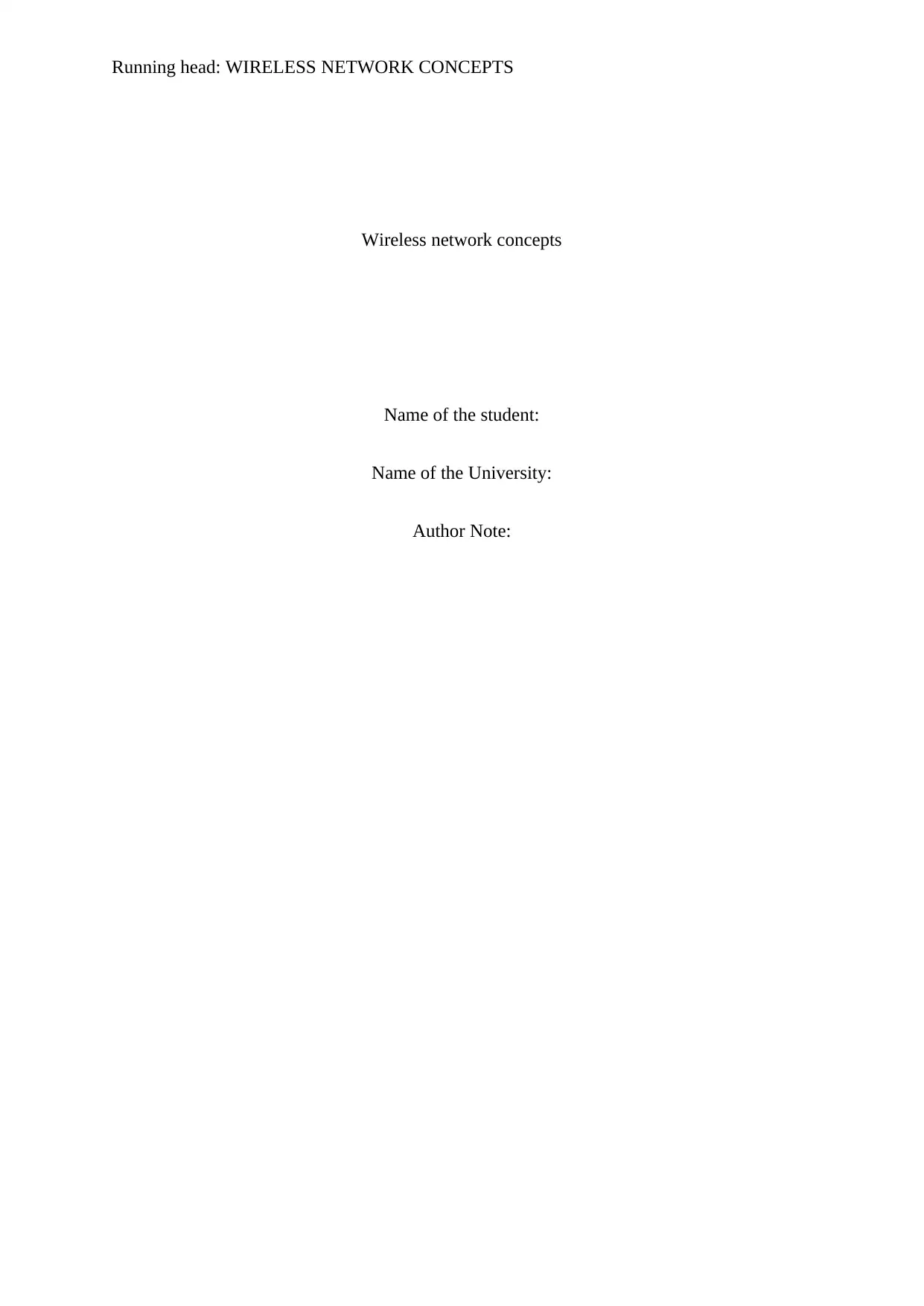
Running head: WIRELESS NETWORK CONCEPTS
Wireless network concepts
Name of the student:
Name of the University:
Author Note:
Wireless network concepts
Name of the student:
Name of the University:
Author Note:
Secure Best Marks with AI Grader
Need help grading? Try our AI Grader for instant feedback on your assignments.
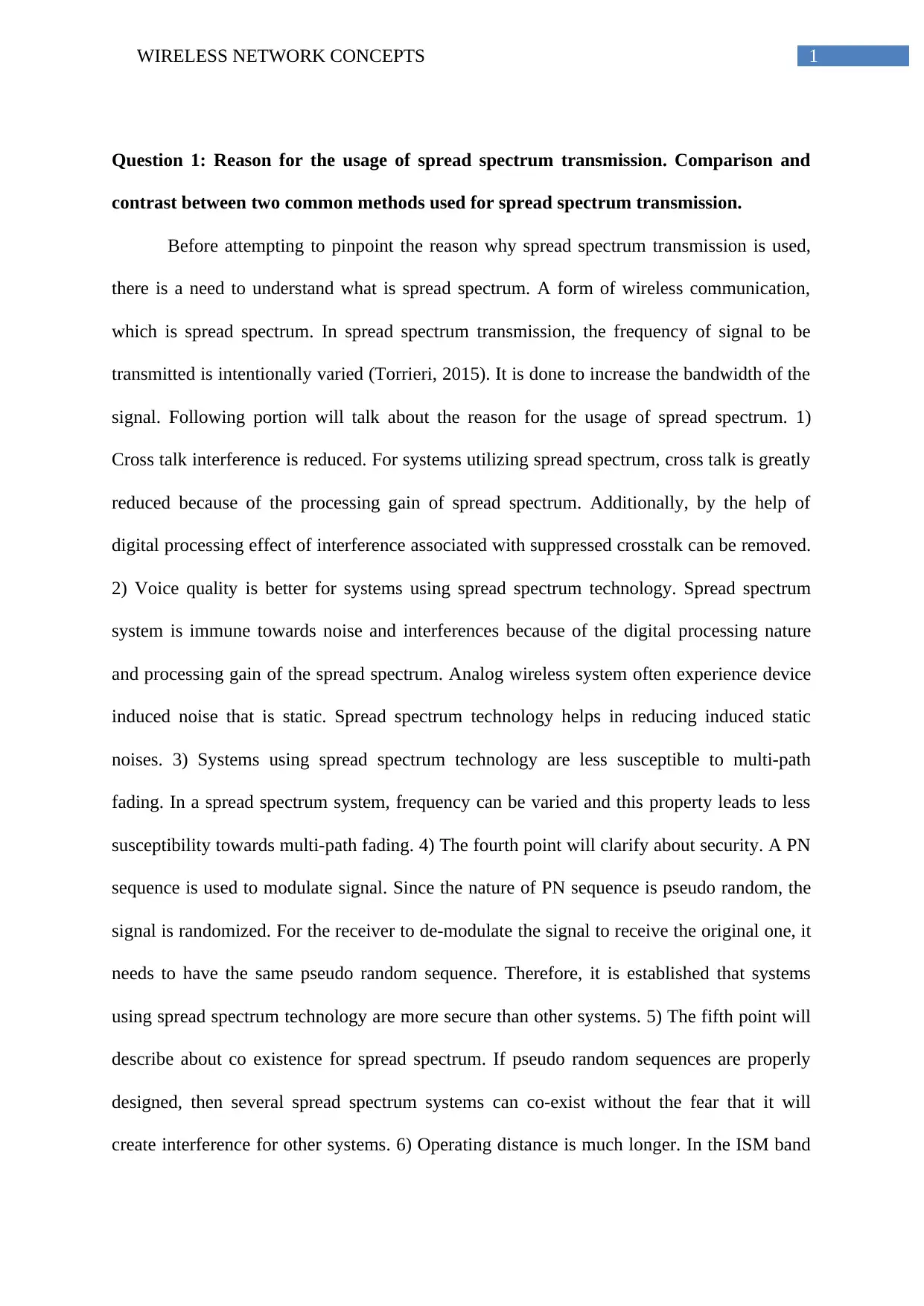
1WIRELESS NETWORK CONCEPTS
Question 1: Reason for the usage of spread spectrum transmission. Comparison and
contrast between two common methods used for spread spectrum transmission.
Before attempting to pinpoint the reason why spread spectrum transmission is used,
there is a need to understand what is spread spectrum. A form of wireless communication,
which is spread spectrum. In spread spectrum transmission, the frequency of signal to be
transmitted is intentionally varied (Torrieri, 2015). It is done to increase the bandwidth of the
signal. Following portion will talk about the reason for the usage of spread spectrum. 1)
Cross talk interference is reduced. For systems utilizing spread spectrum, cross talk is greatly
reduced because of the processing gain of spread spectrum. Additionally, by the help of
digital processing effect of interference associated with suppressed crosstalk can be removed.
2) Voice quality is better for systems using spread spectrum technology. Spread spectrum
system is immune towards noise and interferences because of the digital processing nature
and processing gain of the spread spectrum. Analog wireless system often experience device
induced noise that is static. Spread spectrum technology helps in reducing induced static
noises. 3) Systems using spread spectrum technology are less susceptible to multi-path
fading. In a spread spectrum system, frequency can be varied and this property leads to less
susceptibility towards multi-path fading. 4) The fourth point will clarify about security. A PN
sequence is used to modulate signal. Since the nature of PN sequence is pseudo random, the
signal is randomized. For the receiver to de-modulate the signal to receive the original one, it
needs to have the same pseudo random sequence. Therefore, it is established that systems
using spread spectrum technology are more secure than other systems. 5) The fifth point will
describe about co existence for spread spectrum. If pseudo random sequences are properly
designed, then several spread spectrum systems can co-exist without the fear that it will
create interference for other systems. 6) Operating distance is much longer. In the ISM band
Question 1: Reason for the usage of spread spectrum transmission. Comparison and
contrast between two common methods used for spread spectrum transmission.
Before attempting to pinpoint the reason why spread spectrum transmission is used,
there is a need to understand what is spread spectrum. A form of wireless communication,
which is spread spectrum. In spread spectrum transmission, the frequency of signal to be
transmitted is intentionally varied (Torrieri, 2015). It is done to increase the bandwidth of the
signal. Following portion will talk about the reason for the usage of spread spectrum. 1)
Cross talk interference is reduced. For systems utilizing spread spectrum, cross talk is greatly
reduced because of the processing gain of spread spectrum. Additionally, by the help of
digital processing effect of interference associated with suppressed crosstalk can be removed.
2) Voice quality is better for systems using spread spectrum technology. Spread spectrum
system is immune towards noise and interferences because of the digital processing nature
and processing gain of the spread spectrum. Analog wireless system often experience device
induced noise that is static. Spread spectrum technology helps in reducing induced static
noises. 3) Systems using spread spectrum technology are less susceptible to multi-path
fading. In a spread spectrum system, frequency can be varied and this property leads to less
susceptibility towards multi-path fading. 4) The fourth point will clarify about security. A PN
sequence is used to modulate signal. Since the nature of PN sequence is pseudo random, the
signal is randomized. For the receiver to de-modulate the signal to receive the original one, it
needs to have the same pseudo random sequence. Therefore, it is established that systems
using spread spectrum technology are more secure than other systems. 5) The fifth point will
describe about co existence for spread spectrum. If pseudo random sequences are properly
designed, then several spread spectrum systems can co-exist without the fear that it will
create interference for other systems. 6) Operating distance is much longer. In the ISM band
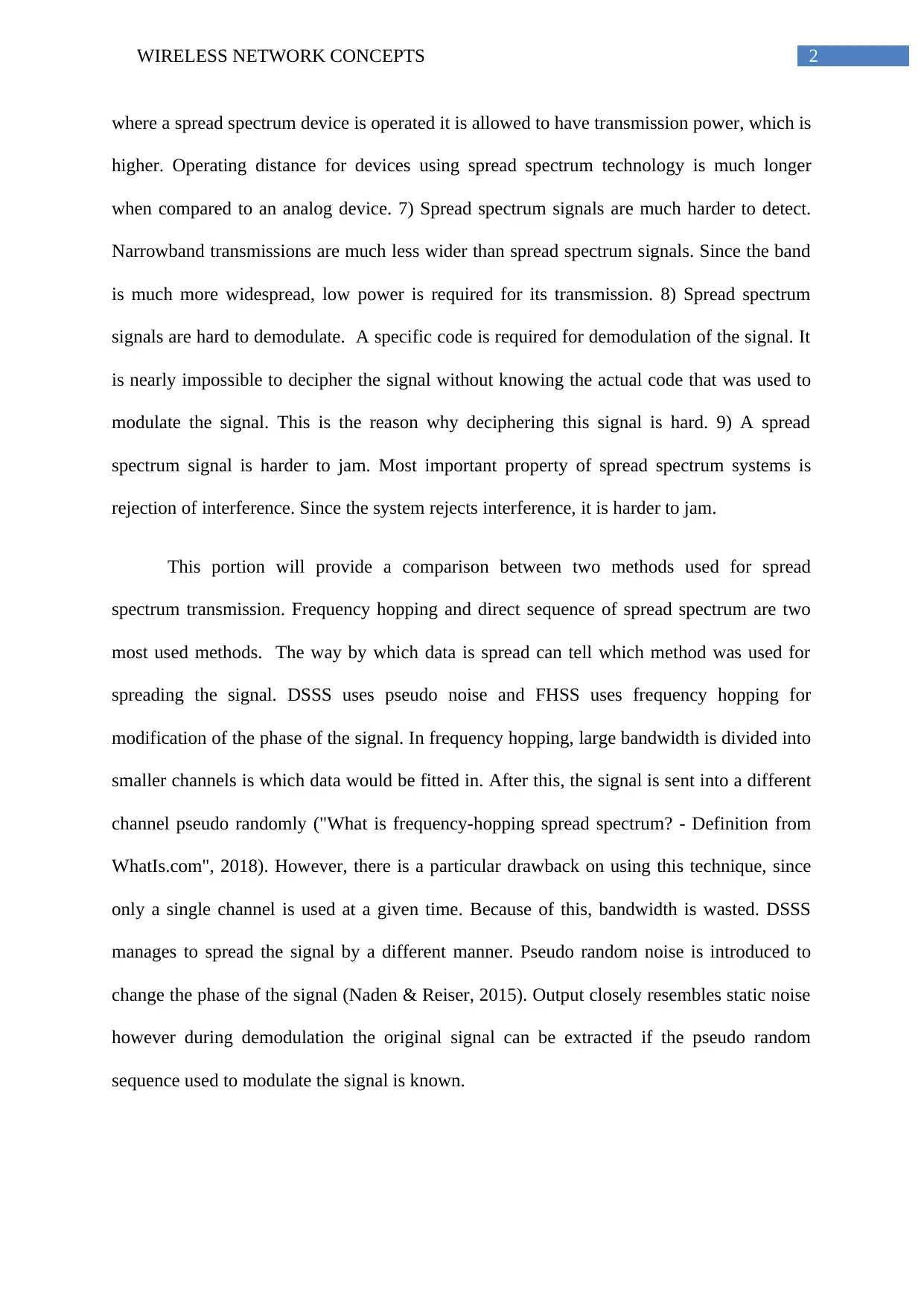
2WIRELESS NETWORK CONCEPTS
where a spread spectrum device is operated it is allowed to have transmission power, which is
higher. Operating distance for devices using spread spectrum technology is much longer
when compared to an analog device. 7) Spread spectrum signals are much harder to detect.
Narrowband transmissions are much less wider than spread spectrum signals. Since the band
is much more widespread, low power is required for its transmission. 8) Spread spectrum
signals are hard to demodulate. A specific code is required for demodulation of the signal. It
is nearly impossible to decipher the signal without knowing the actual code that was used to
modulate the signal. This is the reason why deciphering this signal is hard. 9) A spread
spectrum signal is harder to jam. Most important property of spread spectrum systems is
rejection of interference. Since the system rejects interference, it is harder to jam.
This portion will provide a comparison between two methods used for spread
spectrum transmission. Frequency hopping and direct sequence of spread spectrum are two
most used methods. The way by which data is spread can tell which method was used for
spreading the signal. DSSS uses pseudo noise and FHSS uses frequency hopping for
modification of the phase of the signal. In frequency hopping, large bandwidth is divided into
smaller channels is which data would be fitted in. After this, the signal is sent into a different
channel pseudo randomly ("What is frequency-hopping spread spectrum? - Definition from
WhatIs.com", 2018). However, there is a particular drawback on using this technique, since
only a single channel is used at a given time. Because of this, bandwidth is wasted. DSSS
manages to spread the signal by a different manner. Pseudo random noise is introduced to
change the phase of the signal (Naden & Reiser, 2015). Output closely resembles static noise
however during demodulation the original signal can be extracted if the pseudo random
sequence used to modulate the signal is known.
where a spread spectrum device is operated it is allowed to have transmission power, which is
higher. Operating distance for devices using spread spectrum technology is much longer
when compared to an analog device. 7) Spread spectrum signals are much harder to detect.
Narrowband transmissions are much less wider than spread spectrum signals. Since the band
is much more widespread, low power is required for its transmission. 8) Spread spectrum
signals are hard to demodulate. A specific code is required for demodulation of the signal. It
is nearly impossible to decipher the signal without knowing the actual code that was used to
modulate the signal. This is the reason why deciphering this signal is hard. 9) A spread
spectrum signal is harder to jam. Most important property of spread spectrum systems is
rejection of interference. Since the system rejects interference, it is harder to jam.
This portion will provide a comparison between two methods used for spread
spectrum transmission. Frequency hopping and direct sequence of spread spectrum are two
most used methods. The way by which data is spread can tell which method was used for
spreading the signal. DSSS uses pseudo noise and FHSS uses frequency hopping for
modification of the phase of the signal. In frequency hopping, large bandwidth is divided into
smaller channels is which data would be fitted in. After this, the signal is sent into a different
channel pseudo randomly ("What is frequency-hopping spread spectrum? - Definition from
WhatIs.com", 2018). However, there is a particular drawback on using this technique, since
only a single channel is used at a given time. Because of this, bandwidth is wasted. DSSS
manages to spread the signal by a different manner. Pseudo random noise is introduced to
change the phase of the signal (Naden & Reiser, 2015). Output closely resembles static noise
however during demodulation the original signal can be extracted if the pseudo random
sequence used to modulate the signal is known.
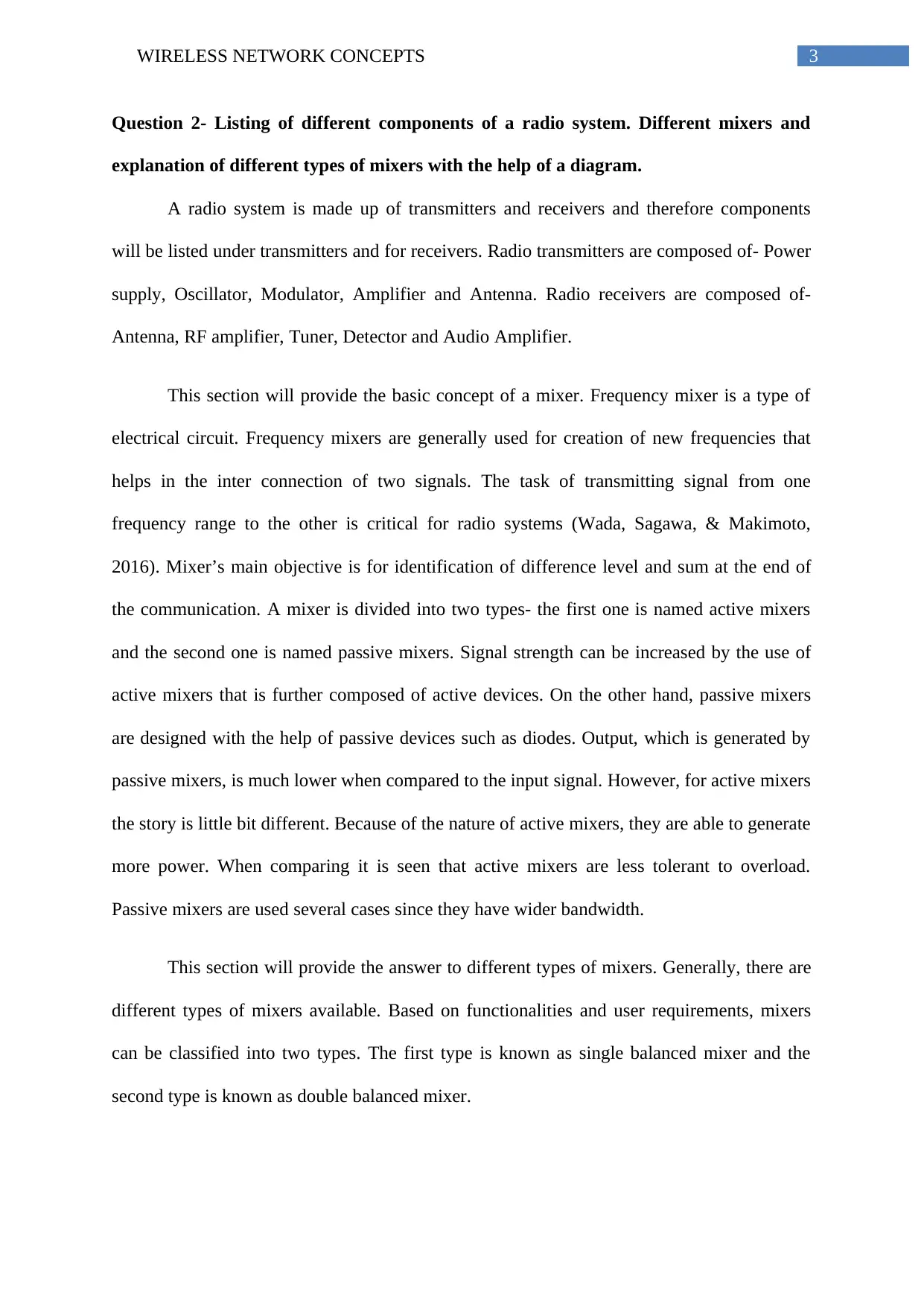
3WIRELESS NETWORK CONCEPTS
Question 2- Listing of different components of a radio system. Different mixers and
explanation of different types of mixers with the help of a diagram.
A radio system is made up of transmitters and receivers and therefore components
will be listed under transmitters and for receivers. Radio transmitters are composed of- Power
supply, Oscillator, Modulator, Amplifier and Antenna. Radio receivers are composed of-
Antenna, RF amplifier, Tuner, Detector and Audio Amplifier.
This section will provide the basic concept of a mixer. Frequency mixer is a type of
electrical circuit. Frequency mixers are generally used for creation of new frequencies that
helps in the inter connection of two signals. The task of transmitting signal from one
frequency range to the other is critical for radio systems (Wada, Sagawa, & Makimoto,
2016). Mixer’s main objective is for identification of difference level and sum at the end of
the communication. A mixer is divided into two types- the first one is named active mixers
and the second one is named passive mixers. Signal strength can be increased by the use of
active mixers that is further composed of active devices. On the other hand, passive mixers
are designed with the help of passive devices such as diodes. Output, which is generated by
passive mixers, is much lower when compared to the input signal. However, for active mixers
the story is little bit different. Because of the nature of active mixers, they are able to generate
more power. When comparing it is seen that active mixers are less tolerant to overload.
Passive mixers are used several cases since they have wider bandwidth.
This section will provide the answer to different types of mixers. Generally, there are
different types of mixers available. Based on functionalities and user requirements, mixers
can be classified into two types. The first type is known as single balanced mixer and the
second type is known as double balanced mixer.
Question 2- Listing of different components of a radio system. Different mixers and
explanation of different types of mixers with the help of a diagram.
A radio system is made up of transmitters and receivers and therefore components
will be listed under transmitters and for receivers. Radio transmitters are composed of- Power
supply, Oscillator, Modulator, Amplifier and Antenna. Radio receivers are composed of-
Antenna, RF amplifier, Tuner, Detector and Audio Amplifier.
This section will provide the basic concept of a mixer. Frequency mixer is a type of
electrical circuit. Frequency mixers are generally used for creation of new frequencies that
helps in the inter connection of two signals. The task of transmitting signal from one
frequency range to the other is critical for radio systems (Wada, Sagawa, & Makimoto,
2016). Mixer’s main objective is for identification of difference level and sum at the end of
the communication. A mixer is divided into two types- the first one is named active mixers
and the second one is named passive mixers. Signal strength can be increased by the use of
active mixers that is further composed of active devices. On the other hand, passive mixers
are designed with the help of passive devices such as diodes. Output, which is generated by
passive mixers, is much lower when compared to the input signal. However, for active mixers
the story is little bit different. Because of the nature of active mixers, they are able to generate
more power. When comparing it is seen that active mixers are less tolerant to overload.
Passive mixers are used several cases since they have wider bandwidth.
This section will provide the answer to different types of mixers. Generally, there are
different types of mixers available. Based on functionalities and user requirements, mixers
can be classified into two types. The first type is known as single balanced mixer and the
second type is known as double balanced mixer.
Secure Best Marks with AI Grader
Need help grading? Try our AI Grader for instant feedback on your assignments.
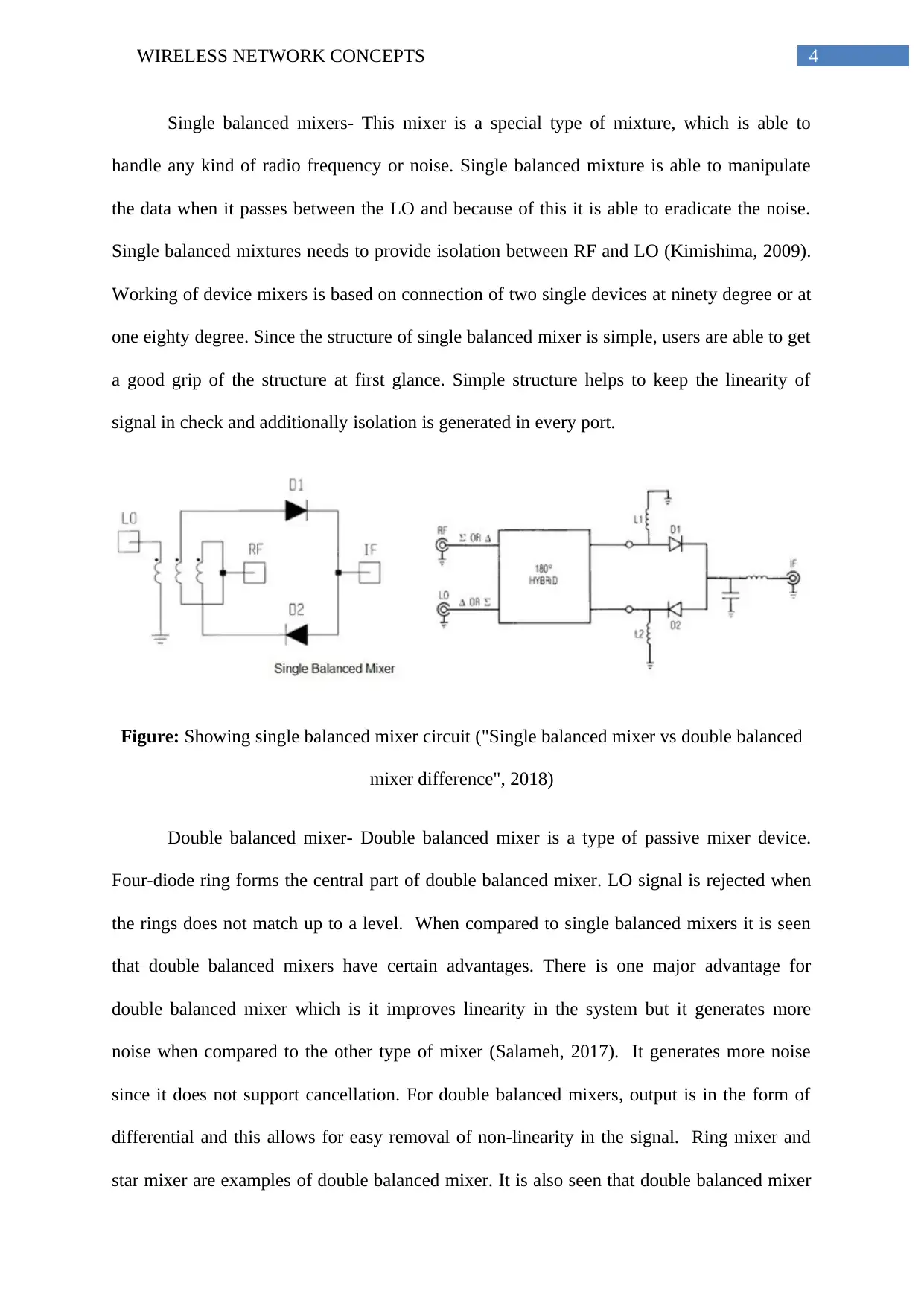
4WIRELESS NETWORK CONCEPTS
Single balanced mixers- This mixer is a special type of mixture, which is able to
handle any kind of radio frequency or noise. Single balanced mixture is able to manipulate
the data when it passes between the LO and because of this it is able to eradicate the noise.
Single balanced mixtures needs to provide isolation between RF and LO (Kimishima, 2009).
Working of device mixers is based on connection of two single devices at ninety degree or at
one eighty degree. Since the structure of single balanced mixer is simple, users are able to get
a good grip of the structure at first glance. Simple structure helps to keep the linearity of
signal in check and additionally isolation is generated in every port.
Figure: Showing single balanced mixer circuit ("Single balanced mixer vs double balanced
mixer difference", 2018)
Double balanced mixer- Double balanced mixer is a type of passive mixer device.
Four-diode ring forms the central part of double balanced mixer. LO signal is rejected when
the rings does not match up to a level. When compared to single balanced mixers it is seen
that double balanced mixers have certain advantages. There is one major advantage for
double balanced mixer which is it improves linearity in the system but it generates more
noise when compared to the other type of mixer (Salameh, 2017). It generates more noise
since it does not support cancellation. For double balanced mixers, output is in the form of
differential and this allows for easy removal of non-linearity in the signal. Ring mixer and
star mixer are examples of double balanced mixer. It is also seen that double balanced mixer
Single balanced mixers- This mixer is a special type of mixture, which is able to
handle any kind of radio frequency or noise. Single balanced mixture is able to manipulate
the data when it passes between the LO and because of this it is able to eradicate the noise.
Single balanced mixtures needs to provide isolation between RF and LO (Kimishima, 2009).
Working of device mixers is based on connection of two single devices at ninety degree or at
one eighty degree. Since the structure of single balanced mixer is simple, users are able to get
a good grip of the structure at first glance. Simple structure helps to keep the linearity of
signal in check and additionally isolation is generated in every port.
Figure: Showing single balanced mixer circuit ("Single balanced mixer vs double balanced
mixer difference", 2018)
Double balanced mixer- Double balanced mixer is a type of passive mixer device.
Four-diode ring forms the central part of double balanced mixer. LO signal is rejected when
the rings does not match up to a level. When compared to single balanced mixers it is seen
that double balanced mixers have certain advantages. There is one major advantage for
double balanced mixer which is it improves linearity in the system but it generates more
noise when compared to the other type of mixer (Salameh, 2017). It generates more noise
since it does not support cancellation. For double balanced mixers, output is in the form of
differential and this allows for easy removal of non-linearity in the signal. Ring mixer and
star mixer are examples of double balanced mixer. It is also seen that double balanced mixer
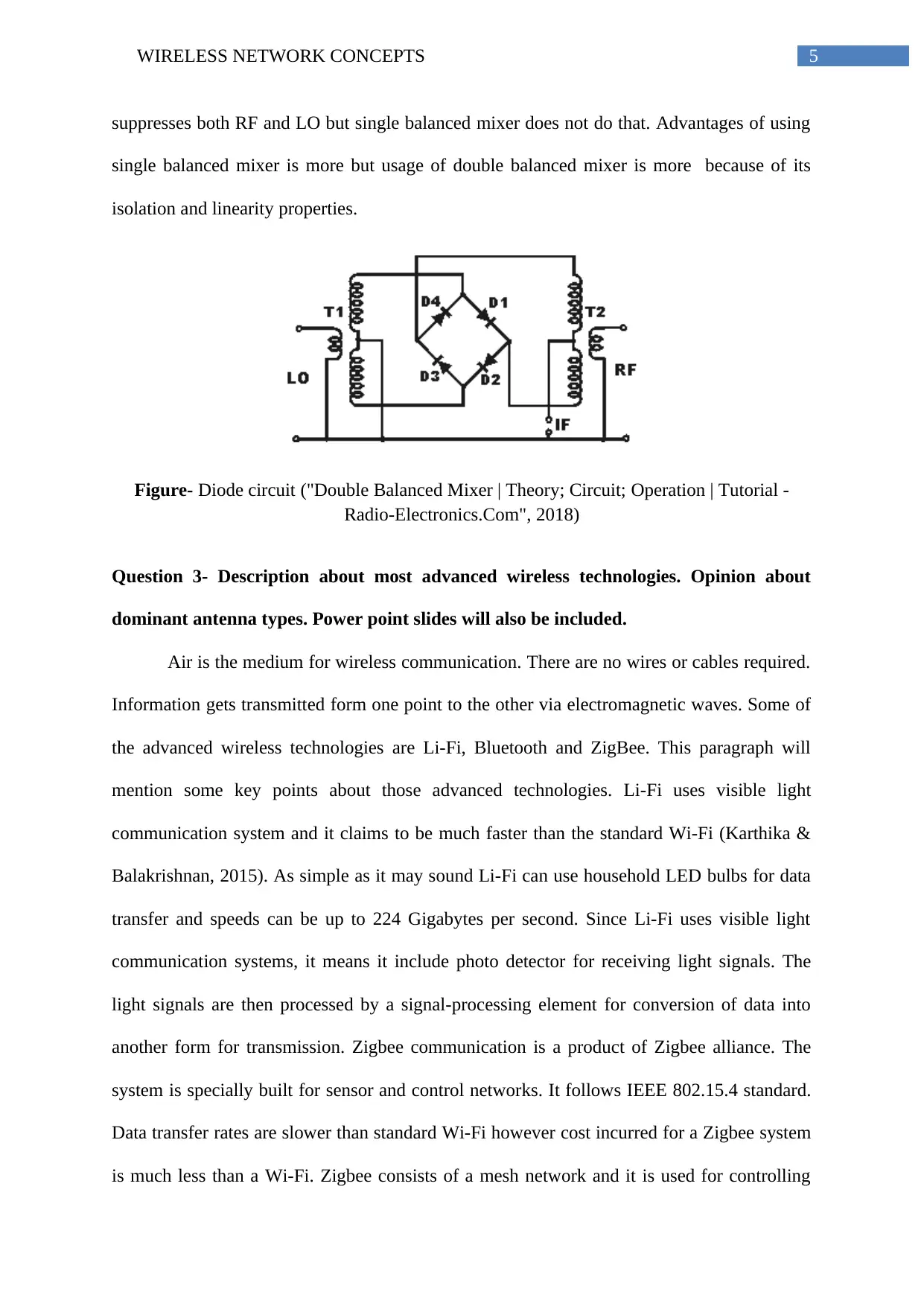
5WIRELESS NETWORK CONCEPTS
suppresses both RF and LO but single balanced mixer does not do that. Advantages of using
single balanced mixer is more but usage of double balanced mixer is more because of its
isolation and linearity properties.
Figure- Diode circuit ("Double Balanced Mixer | Theory; Circuit; Operation | Tutorial -
Radio-Electronics.Com", 2018)
Question 3- Description about most advanced wireless technologies. Opinion about
dominant antenna types. Power point slides will also be included.
Air is the medium for wireless communication. There are no wires or cables required.
Information gets transmitted form one point to the other via electromagnetic waves. Some of
the advanced wireless technologies are Li-Fi, Bluetooth and ZigBee. This paragraph will
mention some key points about those advanced technologies. Li-Fi uses visible light
communication system and it claims to be much faster than the standard Wi-Fi (Karthika &
Balakrishnan, 2015). As simple as it may sound Li-Fi can use household LED bulbs for data
transfer and speeds can be up to 224 Gigabytes per second. Since Li-Fi uses visible light
communication systems, it means it include photo detector for receiving light signals. The
light signals are then processed by a signal-processing element for conversion of data into
another form for transmission. Zigbee communication is a product of Zigbee alliance. The
system is specially built for sensor and control networks. It follows IEEE 802.15.4 standard.
Data transfer rates are slower than standard Wi-Fi however cost incurred for a Zigbee system
is much less than a Wi-Fi. Zigbee consists of a mesh network and it is used for controlling
suppresses both RF and LO but single balanced mixer does not do that. Advantages of using
single balanced mixer is more but usage of double balanced mixer is more because of its
isolation and linearity properties.
Figure- Diode circuit ("Double Balanced Mixer | Theory; Circuit; Operation | Tutorial -
Radio-Electronics.Com", 2018)
Question 3- Description about most advanced wireless technologies. Opinion about
dominant antenna types. Power point slides will also be included.
Air is the medium for wireless communication. There are no wires or cables required.
Information gets transmitted form one point to the other via electromagnetic waves. Some of
the advanced wireless technologies are Li-Fi, Bluetooth and ZigBee. This paragraph will
mention some key points about those advanced technologies. Li-Fi uses visible light
communication system and it claims to be much faster than the standard Wi-Fi (Karthika &
Balakrishnan, 2015). As simple as it may sound Li-Fi can use household LED bulbs for data
transfer and speeds can be up to 224 Gigabytes per second. Since Li-Fi uses visible light
communication systems, it means it include photo detector for receiving light signals. The
light signals are then processed by a signal-processing element for conversion of data into
another form for transmission. Zigbee communication is a product of Zigbee alliance. The
system is specially built for sensor and control networks. It follows IEEE 802.15.4 standard.
Data transfer rates are slower than standard Wi-Fi however cost incurred for a Zigbee system
is much less than a Wi-Fi. Zigbee consists of a mesh network and it is used for controlling
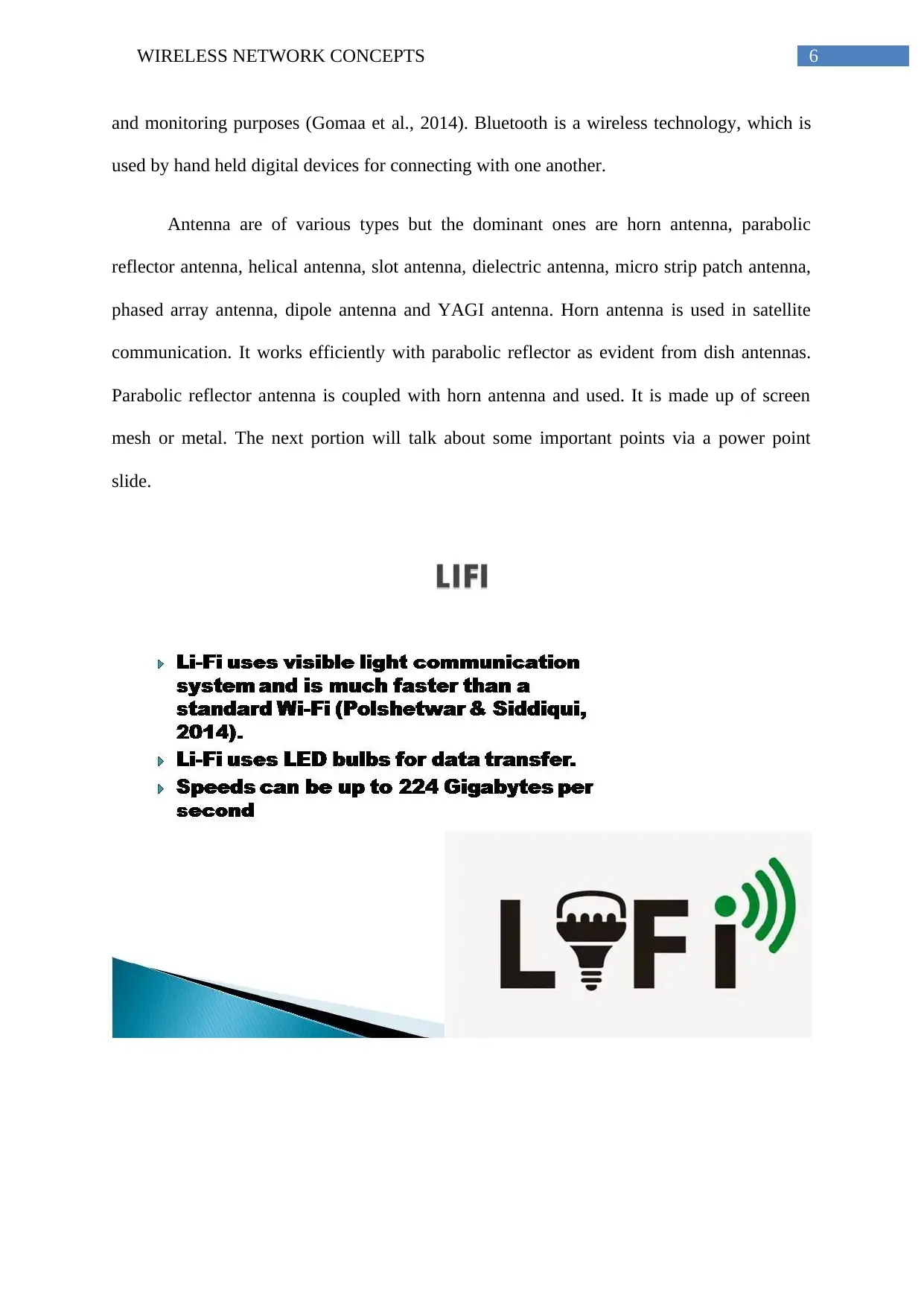
6WIRELESS NETWORK CONCEPTS
and monitoring purposes (Gomaa et al., 2014). Bluetooth is a wireless technology, which is
used by hand held digital devices for connecting with one another.
Antenna are of various types but the dominant ones are horn antenna, parabolic
reflector antenna, helical antenna, slot antenna, dielectric antenna, micro strip patch antenna,
phased array antenna, dipole antenna and YAGI antenna. Horn antenna is used in satellite
communication. It works efficiently with parabolic reflector as evident from dish antennas.
Parabolic reflector antenna is coupled with horn antenna and used. It is made up of screen
mesh or metal. The next portion will talk about some important points via a power point
slide.
and monitoring purposes (Gomaa et al., 2014). Bluetooth is a wireless technology, which is
used by hand held digital devices for connecting with one another.
Antenna are of various types but the dominant ones are horn antenna, parabolic
reflector antenna, helical antenna, slot antenna, dielectric antenna, micro strip patch antenna,
phased array antenna, dipole antenna and YAGI antenna. Horn antenna is used in satellite
communication. It works efficiently with parabolic reflector as evident from dish antennas.
Parabolic reflector antenna is coupled with horn antenna and used. It is made up of screen
mesh or metal. The next portion will talk about some important points via a power point
slide.
Paraphrase This Document
Need a fresh take? Get an instant paraphrase of this document with our AI Paraphraser
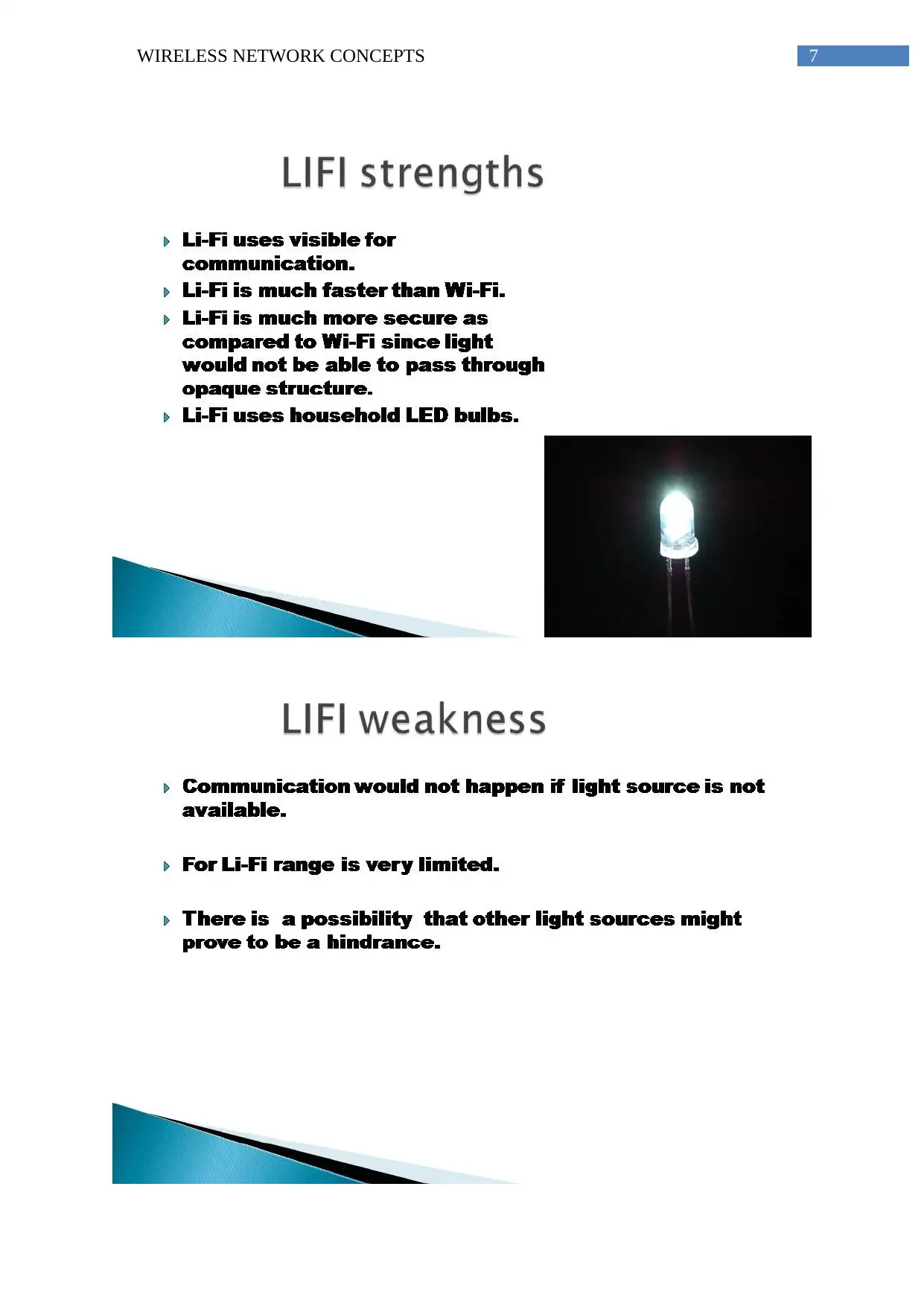
7WIRELESS NETWORK CONCEPTS
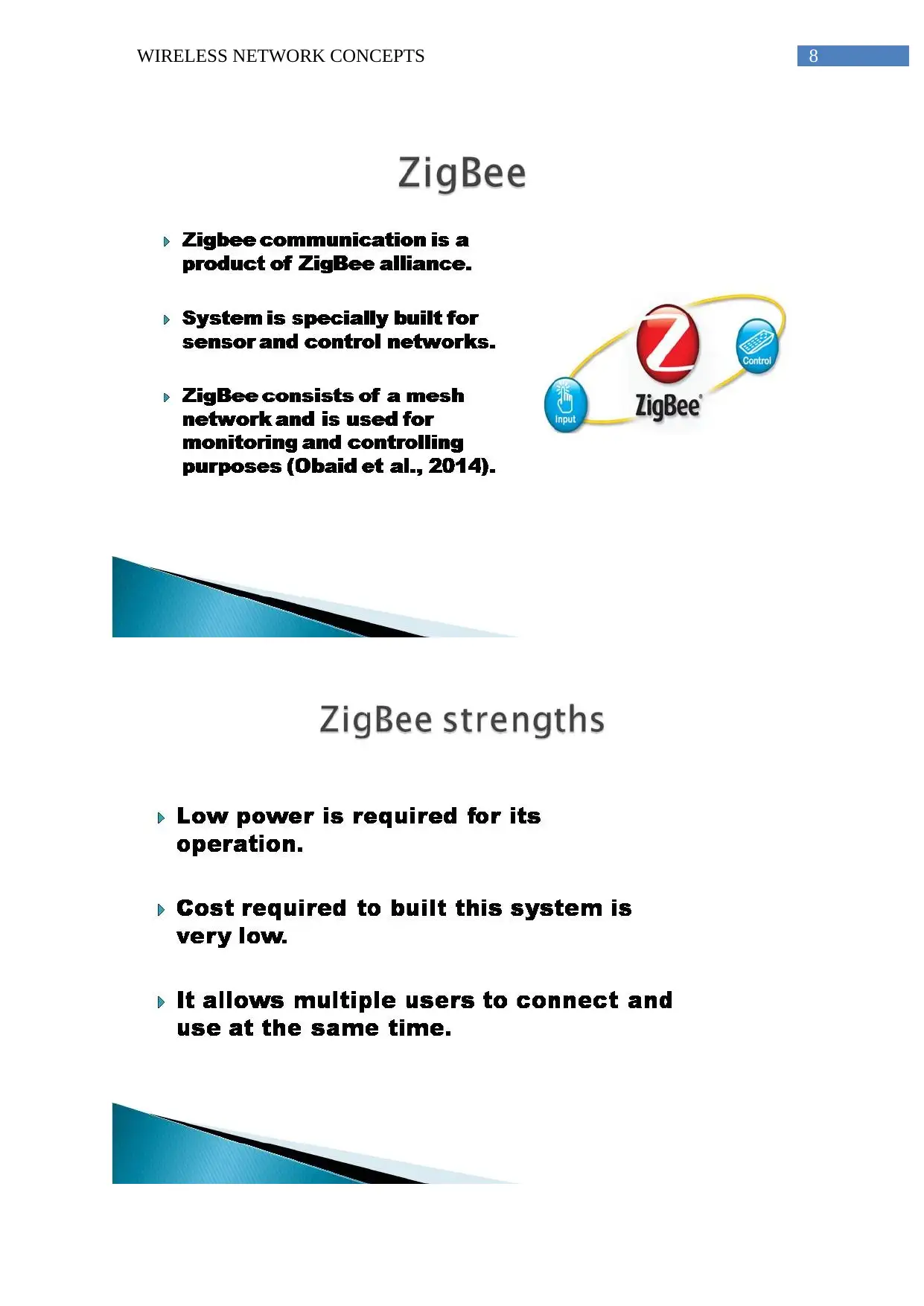
8WIRELESS NETWORK CONCEPTS
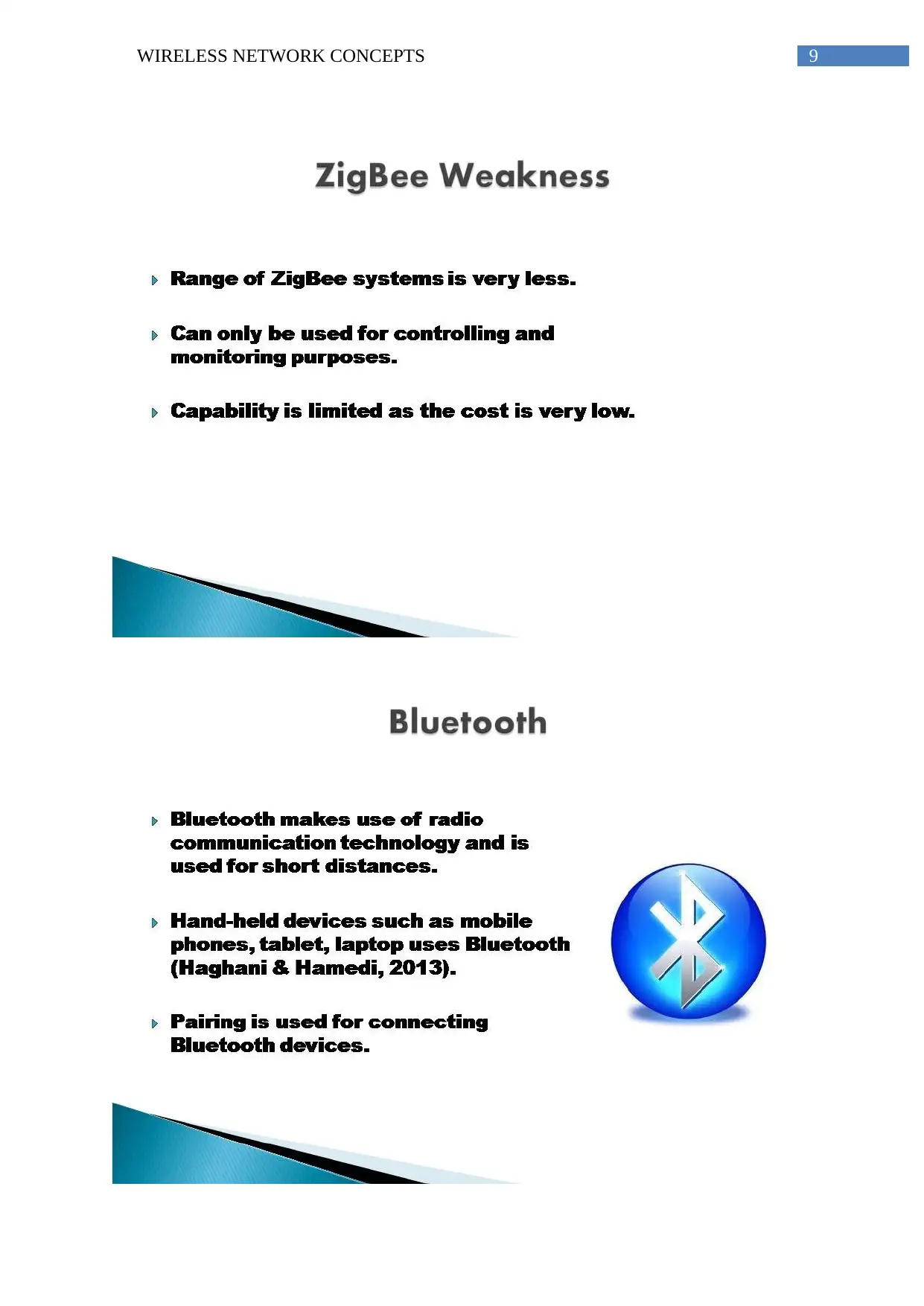
9WIRELESS NETWORK CONCEPTS
Secure Best Marks with AI Grader
Need help grading? Try our AI Grader for instant feedback on your assignments.
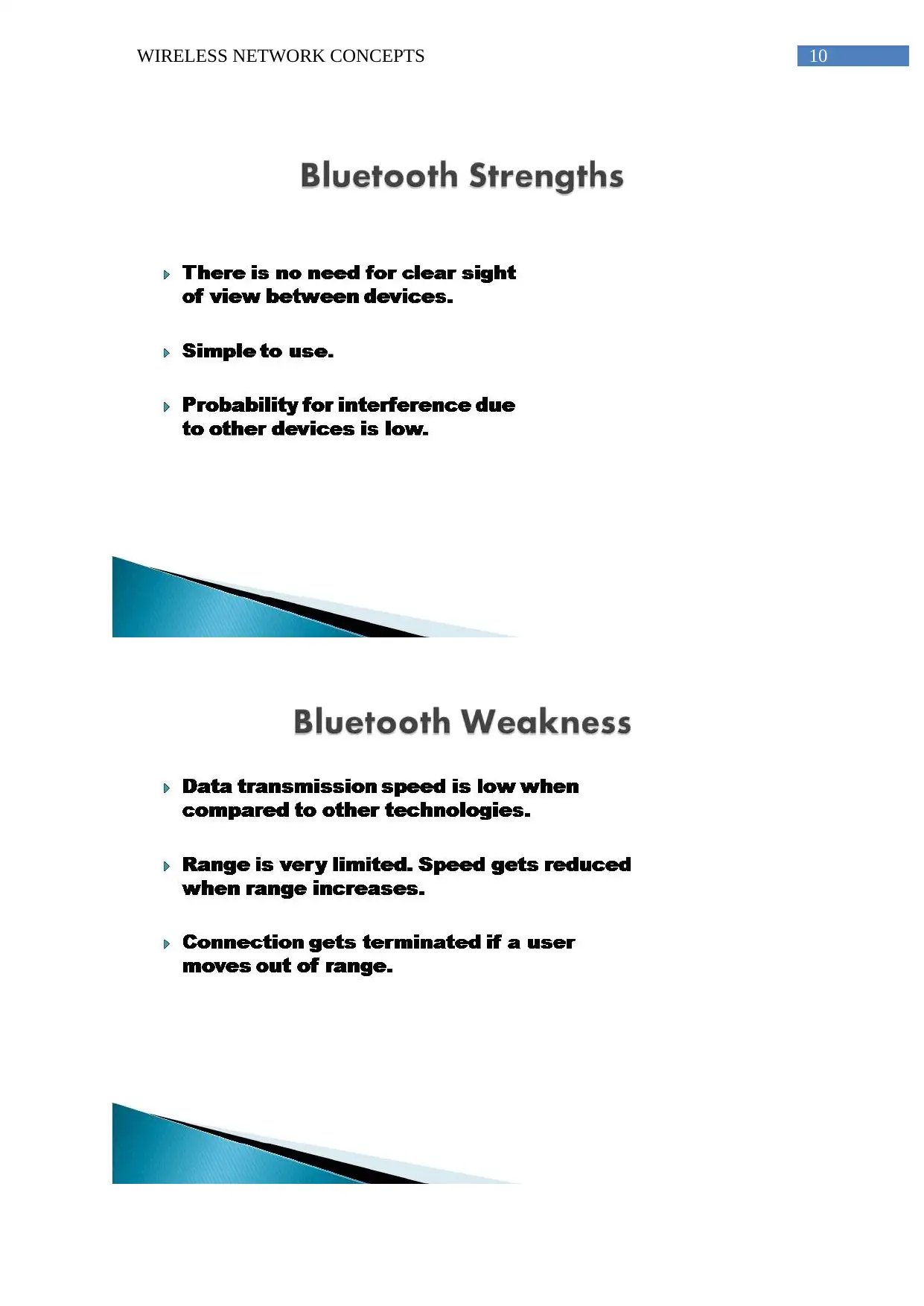
10WIRELESS NETWORK CONCEPTS
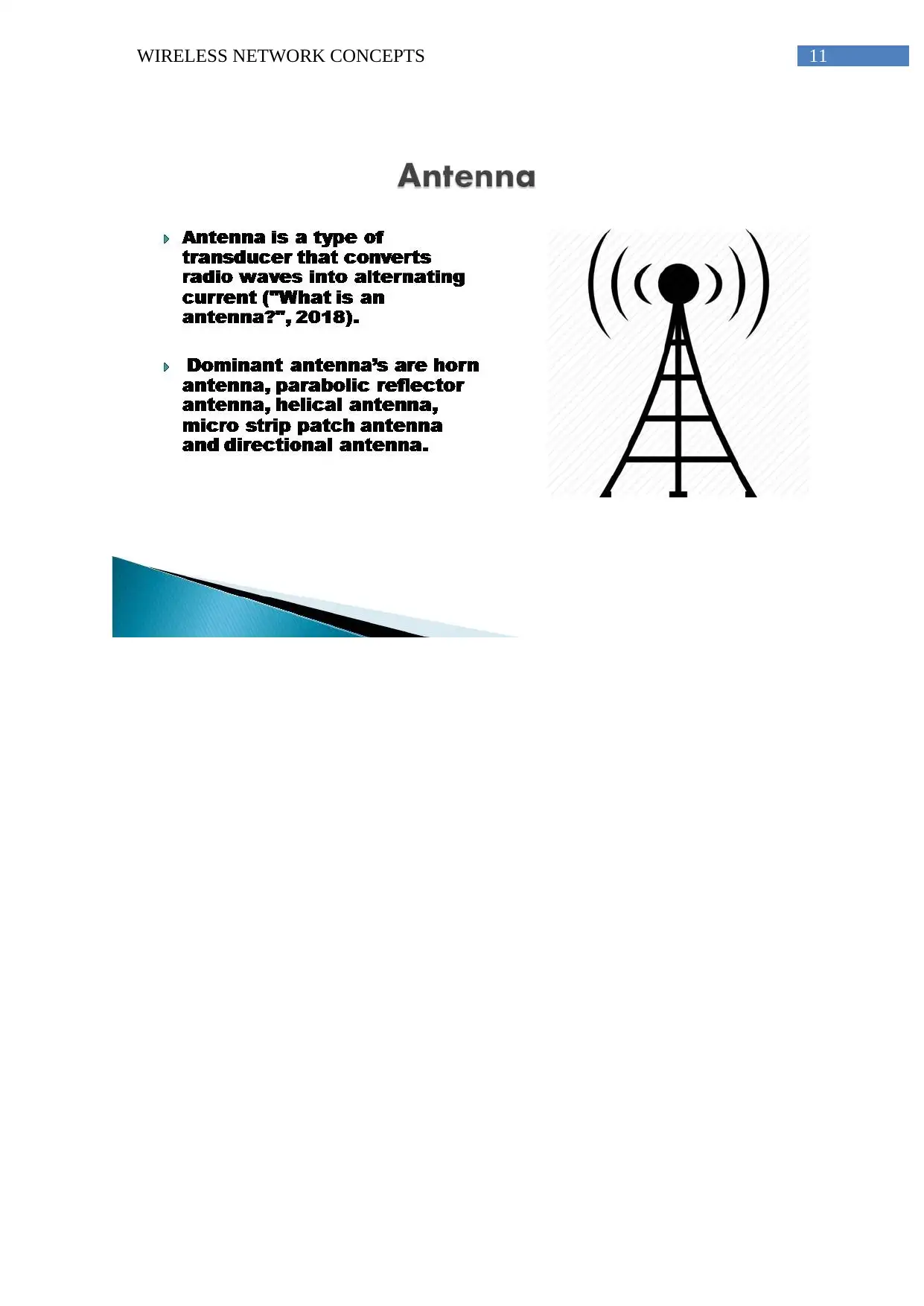
11WIRELESS NETWORK CONCEPTS
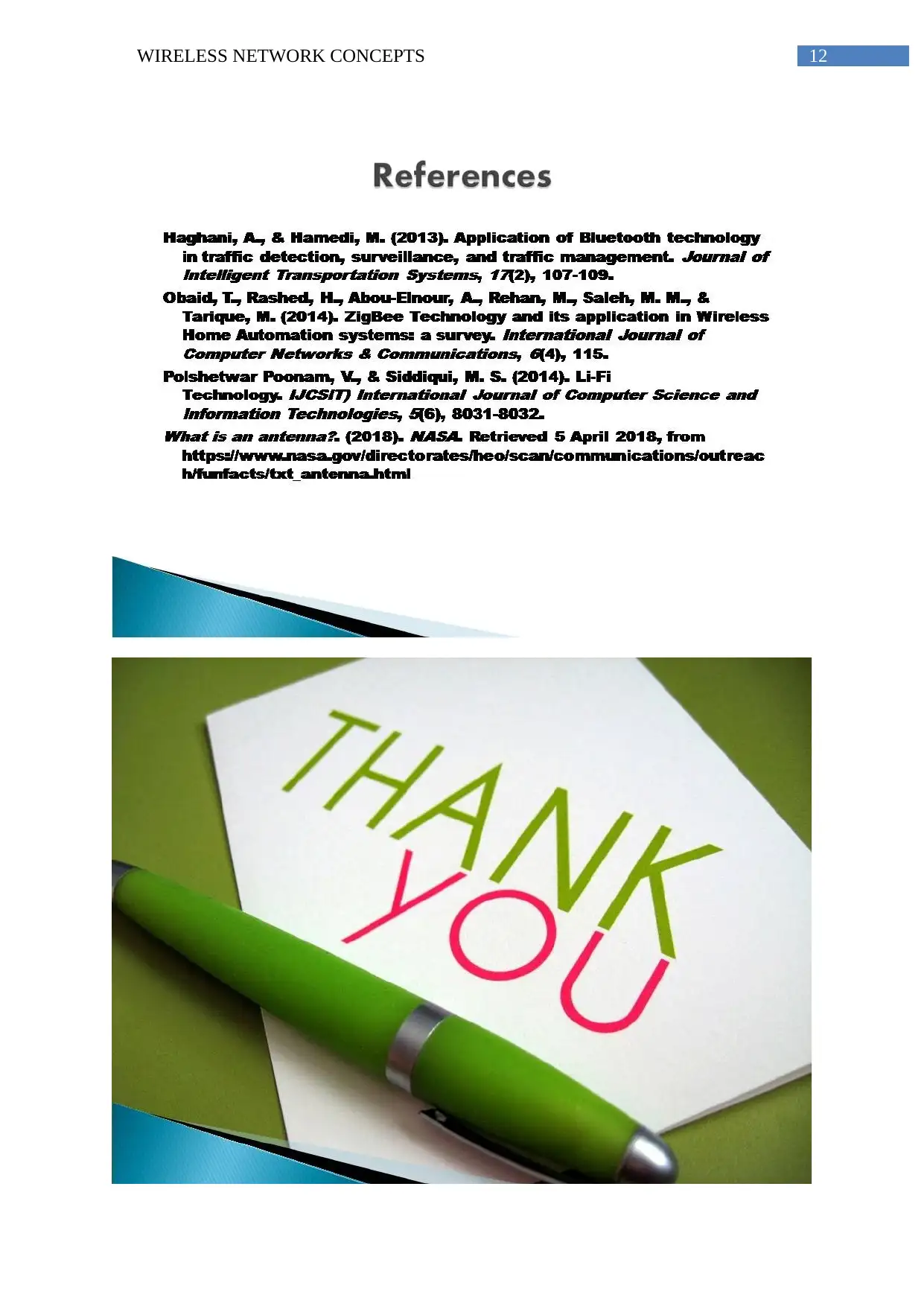
12WIRELESS NETWORK CONCEPTS
Paraphrase This Document
Need a fresh take? Get an instant paraphrase of this document with our AI Paraphraser

13WIRELESS NETWORK CONCEPTS
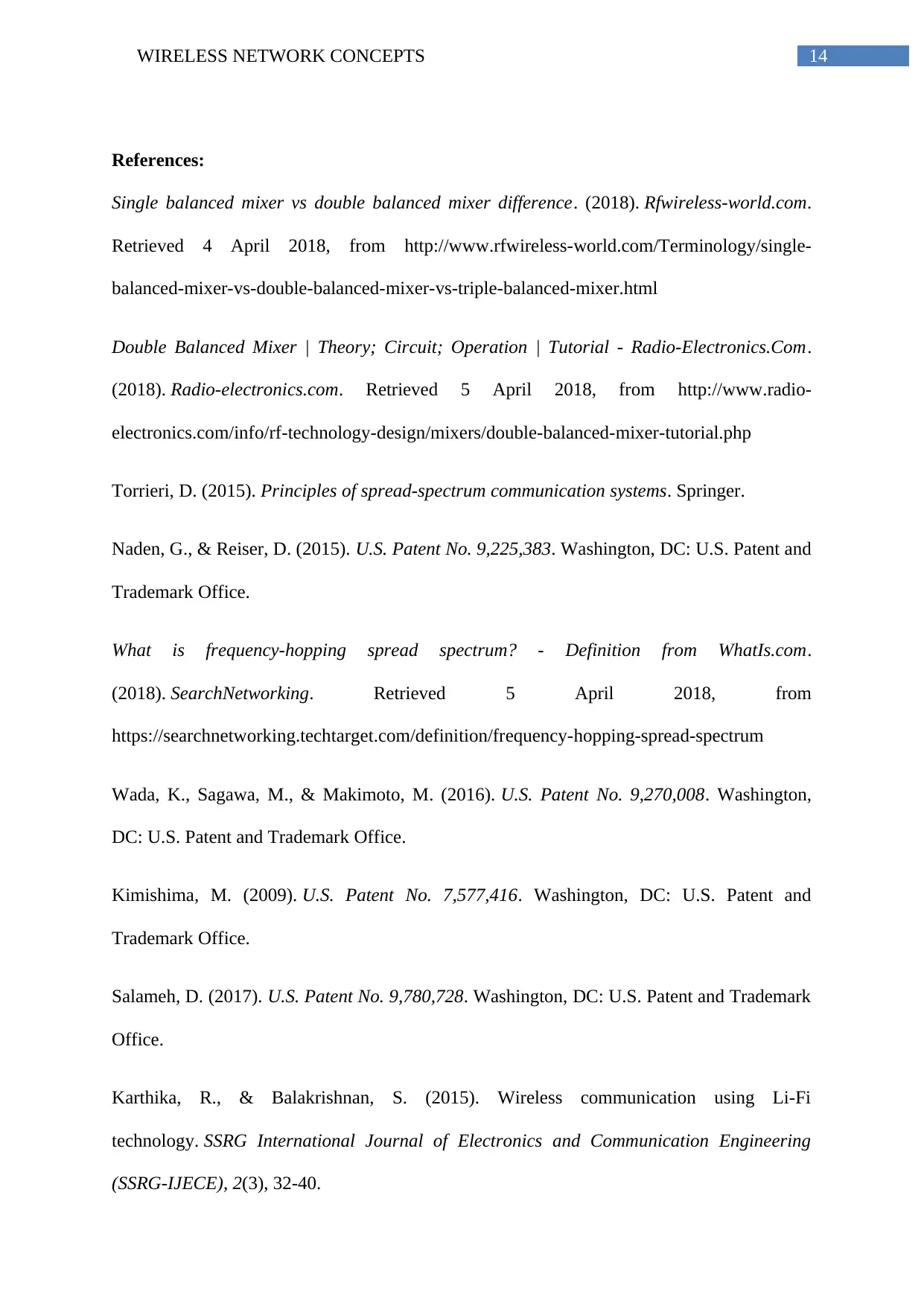
14WIRELESS NETWORK CONCEPTS
References:
Single balanced mixer vs double balanced mixer difference. (2018). Rfwireless-world.com.
Retrieved 4 April 2018, from http://www.rfwireless-world.com/Terminology/single-
balanced-mixer-vs-double-balanced-mixer-vs-triple-balanced-mixer.html
Double Balanced Mixer | Theory; Circuit; Operation | Tutorial - Radio-Electronics.Com.
(2018). Radio-electronics.com. Retrieved 5 April 2018, from http://www.radio-
electronics.com/info/rf-technology-design/mixers/double-balanced-mixer-tutorial.php
Torrieri, D. (2015). Principles of spread-spectrum communication systems. Springer.
Naden, G., & Reiser, D. (2015). U.S. Patent No. 9,225,383. Washington, DC: U.S. Patent and
Trademark Office.
What is frequency-hopping spread spectrum? - Definition from WhatIs.com.
(2018). SearchNetworking. Retrieved 5 April 2018, from
https://searchnetworking.techtarget.com/definition/frequency-hopping-spread-spectrum
Wada, K., Sagawa, M., & Makimoto, M. (2016). U.S. Patent No. 9,270,008. Washington,
DC: U.S. Patent and Trademark Office.
Kimishima, M. (2009). U.S. Patent No. 7,577,416. Washington, DC: U.S. Patent and
Trademark Office.
Salameh, D. (2017). U.S. Patent No. 9,780,728. Washington, DC: U.S. Patent and Trademark
Office.
Karthika, R., & Balakrishnan, S. (2015). Wireless communication using Li-Fi
technology. SSRG International Journal of Electronics and Communication Engineering
(SSRG-IJECE), 2(3), 32-40.
References:
Single balanced mixer vs double balanced mixer difference. (2018). Rfwireless-world.com.
Retrieved 4 April 2018, from http://www.rfwireless-world.com/Terminology/single-
balanced-mixer-vs-double-balanced-mixer-vs-triple-balanced-mixer.html
Double Balanced Mixer | Theory; Circuit; Operation | Tutorial - Radio-Electronics.Com.
(2018). Radio-electronics.com. Retrieved 5 April 2018, from http://www.radio-
electronics.com/info/rf-technology-design/mixers/double-balanced-mixer-tutorial.php
Torrieri, D. (2015). Principles of spread-spectrum communication systems. Springer.
Naden, G., & Reiser, D. (2015). U.S. Patent No. 9,225,383. Washington, DC: U.S. Patent and
Trademark Office.
What is frequency-hopping spread spectrum? - Definition from WhatIs.com.
(2018). SearchNetworking. Retrieved 5 April 2018, from
https://searchnetworking.techtarget.com/definition/frequency-hopping-spread-spectrum
Wada, K., Sagawa, M., & Makimoto, M. (2016). U.S. Patent No. 9,270,008. Washington,
DC: U.S. Patent and Trademark Office.
Kimishima, M. (2009). U.S. Patent No. 7,577,416. Washington, DC: U.S. Patent and
Trademark Office.
Salameh, D. (2017). U.S. Patent No. 9,780,728. Washington, DC: U.S. Patent and Trademark
Office.
Karthika, R., & Balakrishnan, S. (2015). Wireless communication using Li-Fi
technology. SSRG International Journal of Electronics and Communication Engineering
(SSRG-IJECE), 2(3), 32-40.

15WIRELESS NETWORK CONCEPTS
Gomaa, R. I., Shohdy, I. A., Sharshar, K. A., Al-Kabbani, A. S., & Ragai, H. F. (2014). Real-
time radiological monitoring of nuclear facilities using ZigBee technology. IEEE Sensors
Journal, 14(11), 4007-4013.
Gomaa, R. I., Shohdy, I. A., Sharshar, K. A., Al-Kabbani, A. S., & Ragai, H. F. (2014). Real-
time radiological monitoring of nuclear facilities using ZigBee technology. IEEE Sensors
Journal, 14(11), 4007-4013.
1 out of 16
Related Documents
Your All-in-One AI-Powered Toolkit for Academic Success.
+13062052269
info@desklib.com
Available 24*7 on WhatsApp / Email
![[object Object]](/_next/static/media/star-bottom.7253800d.svg)
Unlock your academic potential
© 2024 | Zucol Services PVT LTD | All rights reserved.



